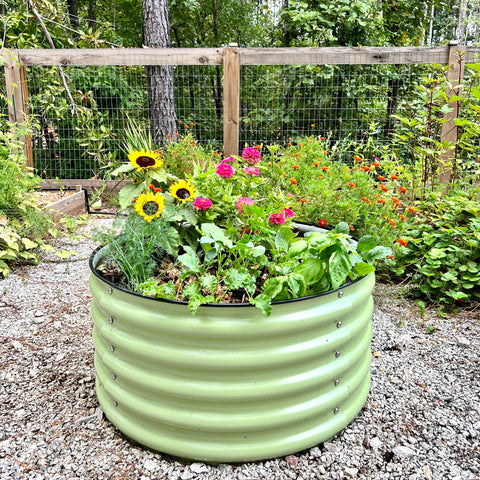How to Make My Garden More Convenient -- Raised Garden Bed
We believe that gardening is an activity that everyone should be able to use, regardless of their physical ability. In most cases, it is! Gardening can be a safe and comfortable way for almost everyone to enjoy by adjusting and using things like raised garden beds. These methods mean that gardeners do not have to stoop. They have enough space to place a walker or wheelchair between two rows. These are just two simple ways to create accessible gardening spaces.
One of the keys to creating an accessible garden is to consider what accessibility facilities you need. For example, creating a wheelchair accessible raised garden bed - gardeners may need to work from a wheelchair with their knees under a raised flowerpot - is different from creating a garden for people who can stand but do not bend.

Adapt the garden to an accessible environment
Put the convex bed on the flat ground
There are many ways to adapt your garden to accessibility. One of the main methods is to place the garden on the flat ground, so that any walker, wheelchair or other person with mobility difficulties can still walk around safely. The durable green bed can be placed anywhere. On sidewalks, driveways, parking lots, etc. Place the durable green bed on flat terrain, otherwise gardening may not be possible. This opens up a large area of land for the garden you may not have expected to use.
If your bed is not in a smooth paved area, use gravel that provides a solid foundation and good drainage. Make sure there are no bumps or dents between the connection from the terrace to the sidewalk or between the sidewalk in the garden itself.
Use vertical gardening techniques
Plant peas, beans and even cherry tomatoes in vertical gardens. Baskets filled with strawberries and other things can let gardeners pick agricultural products at the sight level. Vertical gardens can be created with trays and landscape fabric pockets. There are many unique choices that can create a barrier free space. Any unused wall, fence or roof overhang can be used to achieve some type of accessible vertical garden.
Use a raised planter
A unique way of growing strawberries that we have always admired is to plant them in the drainage ditch that rises above the ground.
With this unconventional method, no one has to bend down to touch the strawberries on the ground.
Use convex to get up
When you grow on a larger, deeper bulge, gardeners are easier to enter because they don't have to stoop that far. This applies to children, older people, and people who may need to sit rather than stand. The durable GreenBeds are 1 or 2 feet deep, or have a special or custom size to choose from, such as a 4-foot high two tiered version. Getting out of bed with deep bumps is ideal for barrier free gardens because they allow gardeners to work from a sitting position. People who have walking aids need not bend so far.

Plant herbs in the window frame
This method makes cutting fresh herbs for the kitchen as easy as sticking out of the window. Hang the window frame on the balcony railing at waist height, or use the window frame on one side of the garage. This is similar to vertical gardening except that the window frame can be hung on any plane that can be anchored.
Leave space between rows or beds
Allow at least 40 inches (3.5 feet) for wheelchair or scooter users. If you want to assemble convex garden areas of different sizes or shapes, please provide a 5 foot turning radius.
Use adaptable gardening tools
There are many tools for people with different physical abilities to use, which can make gardening easier. An ergonomically designed comfort tool may be longer, for example, with a better handle, a larger handle, or a strap that connects the tool to the user's hand. Search around to find tools that suit your situation.
